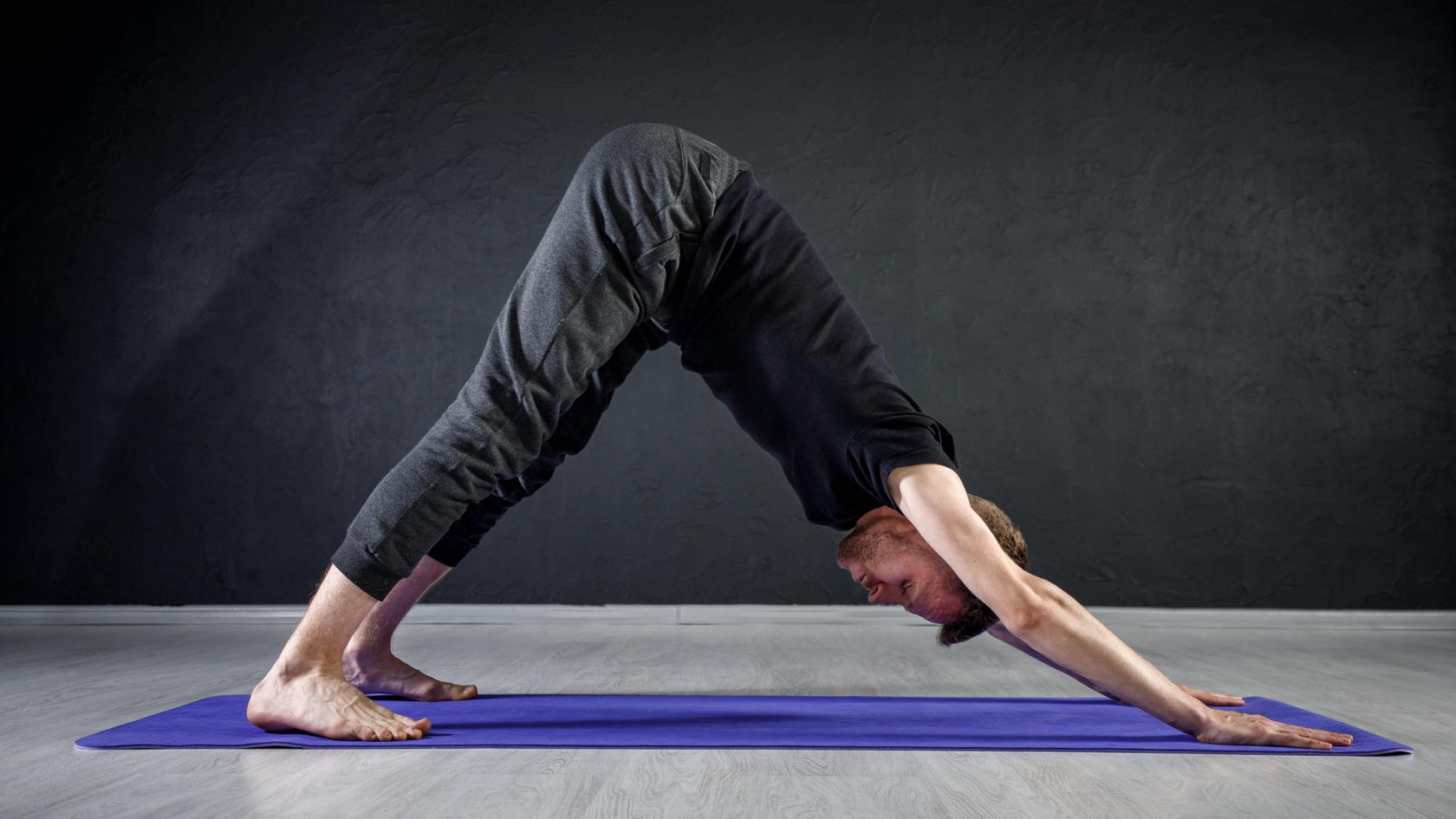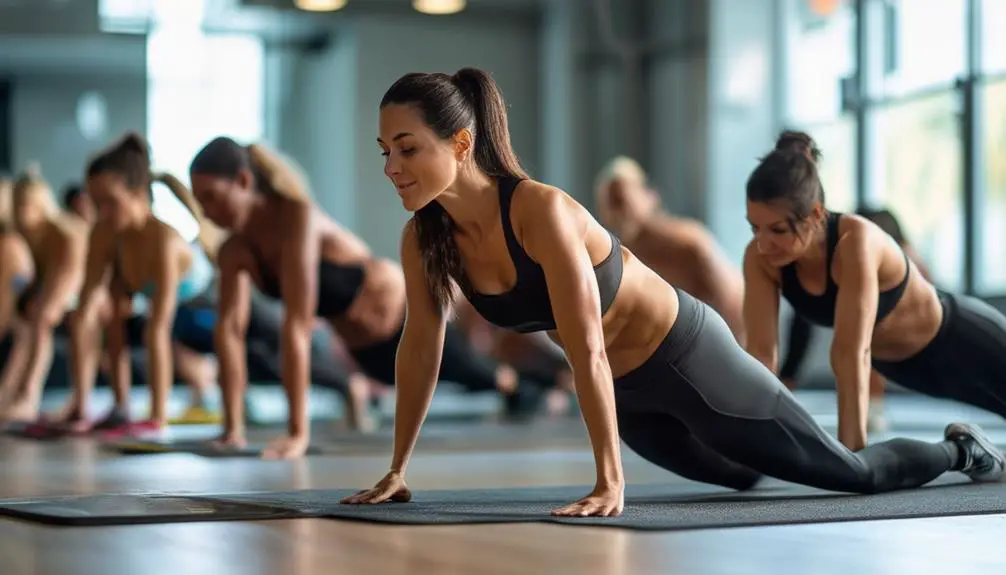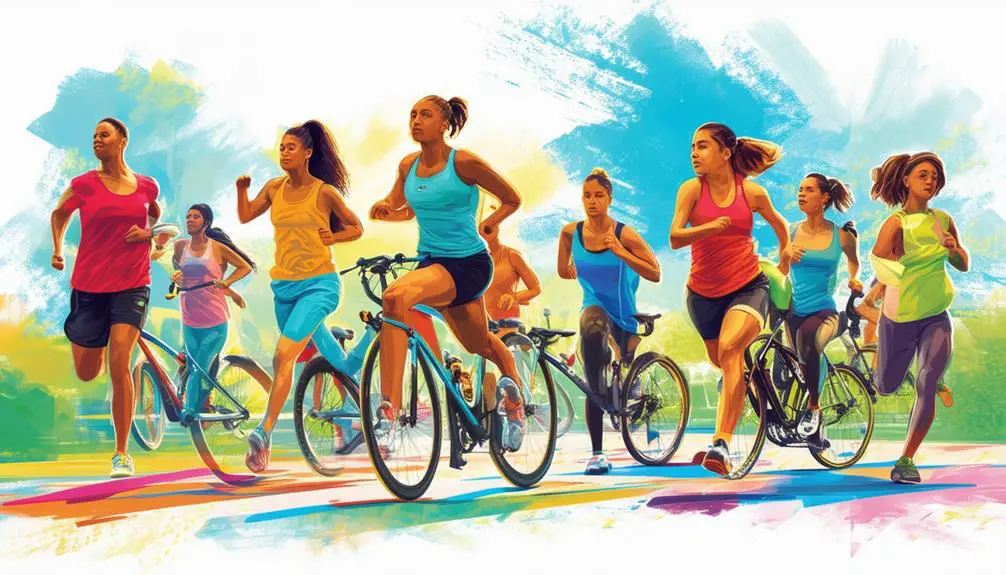As a bridge between strength and suppleness, the Pilates Hundred is a foundational exercise that not only ignites your core but also enhances your flexibility.
You might wonder how a move known for its abdominal challenge can help you become more bendy. Here’s the stretch: by actively engaging your powerhouse—the Pilates term for your core—you stabilize your trunk, which is essential for flexible movement.
Each time you perform the Hundred, you’re not only conditioning your muscles but also promoting a symphony of controlled movements that encourage your body to extend and expand its range. The rhythmic breath work, paired with precision, deepens your stretches and heightens your body awareness, gradually increasing your flexibility.
It’s a subtle yet powerful tool in your flexibility toolkit, and with consistent practice, you’ll find your limbs moving with greater ease and your posture standing taller.
Understanding the Pilates Hundred
To grasp the Pilates Hundred’s impact on your flexibility, you’ll first need to understand its fundamental movements and breathing techniques. The Pilates Hundred is a dynamic sequence that activates your abdominal muscles, including the
obliques, to build core stability and strength. As you perform the exercise, you must lie on your back, extend your legs, and raise them to an angle where you can maintain control. Your arms pulse alongside your body, while your scapula and trunk stabilize, enhancing your posture.
It’s crucial to coordinate your breath with the movement; inhale through your nose for five arm pumps, then exhale sharply through your mouth for another five, completing a cycle.
This costal breathing pattern ensures your abdominal muscles are engaged effectively throughout the Hundred, optimizing the exercise’s benefits for your flexibility.
Anatomy of Flexibility Enhancement
You need to understand that flexibility hinges on two key anatomical components: muscle elasticity and connective tissue.
Muscle elasticity refers to your muscles’ ability to lengthen and return to their original state, a factor that’s critical for performing the Hundred effectively.
Meanwhile, your connective tissues, including ligaments and tendons, provide structural support and must maintain a delicate balance between stability and flexibility.
Muscle Elasticity Factors
Understanding the role of muscle elasticity is key to enhancing your flexibility through exercises like the Pilates Hundred. Here’s how you can improve muscle elasticity to benefit your Pilates practice:
- Warm-up Properly: Before the Hundred, perform a dynamic warm-up to increase blood flow and prepare your muscles for the exercise.
- Maintain Consistency: Regularly practicing Pilates increases your muscles’ ability to stretch, leading to improved elasticity over time.
- Focus on Technique: Execute each movement with precision, ensuring proper engagement and alignment to stretch the muscles effectively.
- Incorporate Variety: Mix in other flexibility-focused exercises to challenge your muscles in different ways, boosting overall elasticity.
Connective Tissue Role
While muscle elasticity is a crucial factor in achieving greater flexibility, your connective tissues, including ligaments and tendons, also play a significant role in how effectively you can perform the Pilates Hundred.
The Pilates Hundred demands a symphony of muscle coordination, notably engaging your transversus abdominis and pelvic floor, which anchor your central stability. These deep core muscles are intertwined with connective tissue, enhancing your body’s structural integrity and flexibility.
Understanding the connective tissue role helps in executing the Hundred with precision. As you maintain the posterior pelvic tilt and scapular stabilization, you’re not just stretching muscles but also conditioning the connective tissues to support a wider range of motion, essential for advanced Pilates work and overall functional flexibility.
Core Engagement and Stretching
You’ll find that the core strength you build from the Hundred directly contributes to your muscular flexibility.
Engaging your abdominals properly not only stabilizes your body but also enhances the efficacy of your stretches.
Core Strength Benefits
Your core’s strength plays a pivotal role in enhancing flexibility, as the Pilates Hundred exercise demands constant engagement and stretching of the abdominal muscles. When you’re doing the Hundred, it’s more than just a workout; it’s a dynamic challenge that brings numerous core strength benefits.
Here’s how:
- Amplifies Core Stability: Engaging your deep abdominal muscles supports your spine and improves overall stability.
- Enhances Posture: Consistent practice aligns and strengthens back muscles, promoting better posture.
- Increases Muscle Endurance: The sustained contraction during the exercise builds endurance in core muscles.
- Improves Coordination: As you coordinate your breath with movement, your body’s synchronization and control are refined.
Enhances Muscular Flexibility
Engaging your core during the Pilates Hundred not only builds strength but also increases muscular flexibility through deliberate stretching and movement control. As you perform the Hundred, keep your legs straight and extend your arms, energizing them alongside your body. This precise posture demands that your muscles stretch while maintaining tension, a dual action that enhances flexibility.
Focus on controlling the movement with your breath, coordinating each inhale and exhale with the rise and fall of your core. This integration of breath with core engagement maximizes the stretch in your muscles, particularly in the abdominals and hip flexors.
The Hundred’s rhythmic nature, coupled with sustained leg and arm positions, makes it a powerful tool for increasing your body’s overall flexibility.
Breathing Technique Importance
In mastering the Pilates Hundred, it’s crucial to understand that your breathing technique is the backbone of core engagement and the stretching that enhances flexibility. This iconic Pilates exercise, as depicted in Joseph Pilates’ ‘Return to Life’, emphasizes the breathing technique importance which is integral to its effectiveness.
Here’s how to ensure your breathing supports your movement:
- Inhale Deeply: Use costal breathing to prepare your core.
- Exhale Fully: Engage your abdominals and pelvic floor as you breathe out.
- Synchronize Breath with Movement: Coordinate your breath to power each leg movement.
- Practice Breathing Exercises: ‘Lying in Clay’ and ‘Inner Tube’ can improve your breath control.
Hundred Exercise Technique Breakdown
The Hundred exercise begins with you lying flat on your back, preparing to engage your core and synchronize your breathing with arm movements. As part of the matwork series, this hundred exercise technique breakdown is pivotal in preparing the body for a challenging workout.
Ensure your legs are in the tabletop position, knees bent, and shins parallel to the floor. Inhale deeply, keeping your spine neutral. As you exhale, curl your head and shoulders off the mat, extending energy through your fingertips as they hover above the ground.
Start pumping your arms vigorously up and down, inhaling for five short counts and exhaling for another five, for a total of ten breath cycles. Remember, precision is key to maximizing the exercise’s effectiveness.
Flexibility Gains From Regular Practice
As you incorporate the Hundred exercise into your routine, you’ll notice a gradual increase in your overall flexibility, particularly in your core and back muscles. Here’s how to make this exercise work for your flexibility goals:
- Engage Your Core: Consistently practicing the Hundred strengthens your abdominal muscles, contributing to a supple midsection.
- Stabilize Your Back: Improved muscle tone around the lower back area enhances flexibility and reduces stiffness.
- Practice Proper Form: Keep your knees bent if necessary to maintain form without straining, which encourages safe flexibility gains.
- Relax and Release: Let the rhythmic breathing pattern of the Hundred promote relaxation, helping to release muscle tension and improve your range of motion.
Adaptations for Different Flexibility Levels
You’ll find that the Pilates Hundred can be customized to match your flexibility level, ensuring a challenging yet safe workout. If you’re just starting out, make it easier by keeping your feet on the floor and your head down. As you gain strength, you can gradually increase the difficulty. Remember, if you experience discomfort in your neck or back, lower your legs to a position that feels sustainable for you.
| Level | Modification | Benefit |
|---|---|---|
| Beginner | Feet on the floor, head down | Reduces strain, builds foundation |
| Intermediate | Legs in tabletop, head lifted | Increases core engagement |
| Advanced | Legs lowered, Pilates ring | Adds intensity, improves stability |
Adapt these modifications to suit your personal needs and enhance your Pilates Hundred experience.
Pilates Hundred: Myths Vs. Reality
Modifications ensure you’re not sacrificing effectiveness for comfort; however, let’s dispel common myths surrounding the Pilates Hundred and reveal the true impact it has on flexibility.
- Myth: The Pilates Hundred is primarily a flexibility exercise.
Reality: While it enhances muscular endurance and core strength, it’s not the first exercise to choose for flexibility gains. - Myth: More reps mean more flexibility.
Reality: Quality trumps quantity; precise, controlled movements yield better results. - Myth: The Hundred is easy and requires no preparation.
Reality: Preceding exercises are crucial to properly perform and benefit from the Pilates Hundred. - Myth: The Hundred should be performed the same way by everyone.
Reality: It should be tailored to individual fitness levels to maintain form and effectiveness.
Integrating the Hundred Into Your Routine
Incorporating the Hundred into your workout routine can significantly enhance your core strength, even if it’s not the primary choice for boosting flexibility.
Start using the Pilates Hundred as a dynamic warm-up to activate your abs and get the blood flowing. If you’re new to this, modify the exercise by keeping your head down and knees bent.
| Progression Steps | Modifications |
|---|---|
| Warm-up | Head down, knees bent |
| Beginner | Feet on the floor |
| Intermediate | Use a Pilates ring |
| Advanced | Straight legs, raised head |
| Full Ab Workout | Include leg stretches, raises, and bicycle crunches |
As you progress, seek professional advice to maintain proper form and explore further variations. Integrate the Hundred with other exercises for a comprehensive ab routine, enhancing your core and potentially your flexibility over time.
Sources
https://www.ashleypattenpilates.com/concious-living/the-most-quintessential-pilates-exercise-the-100
https://pilatesandrea.com/the-pilates-system-the-hundred-vs-the-wall/
https://pilatesteachertips.com/2010/02/09/breaking-down-the-pilates-hundred/
https://www.spotebi.com/exercise-guide/pilates-hundred/




